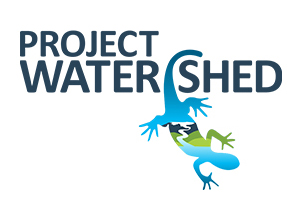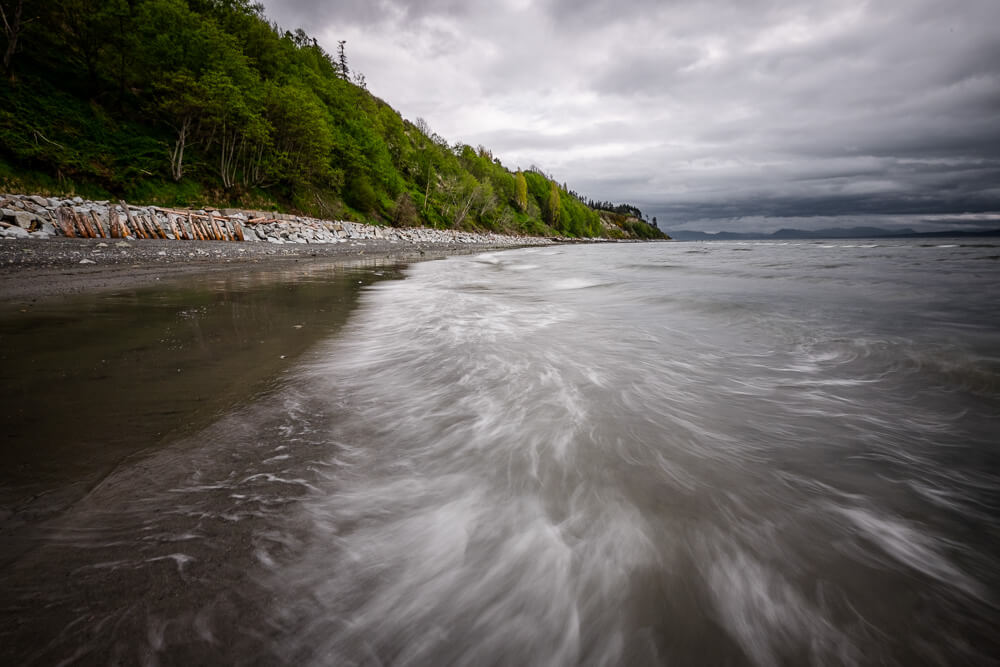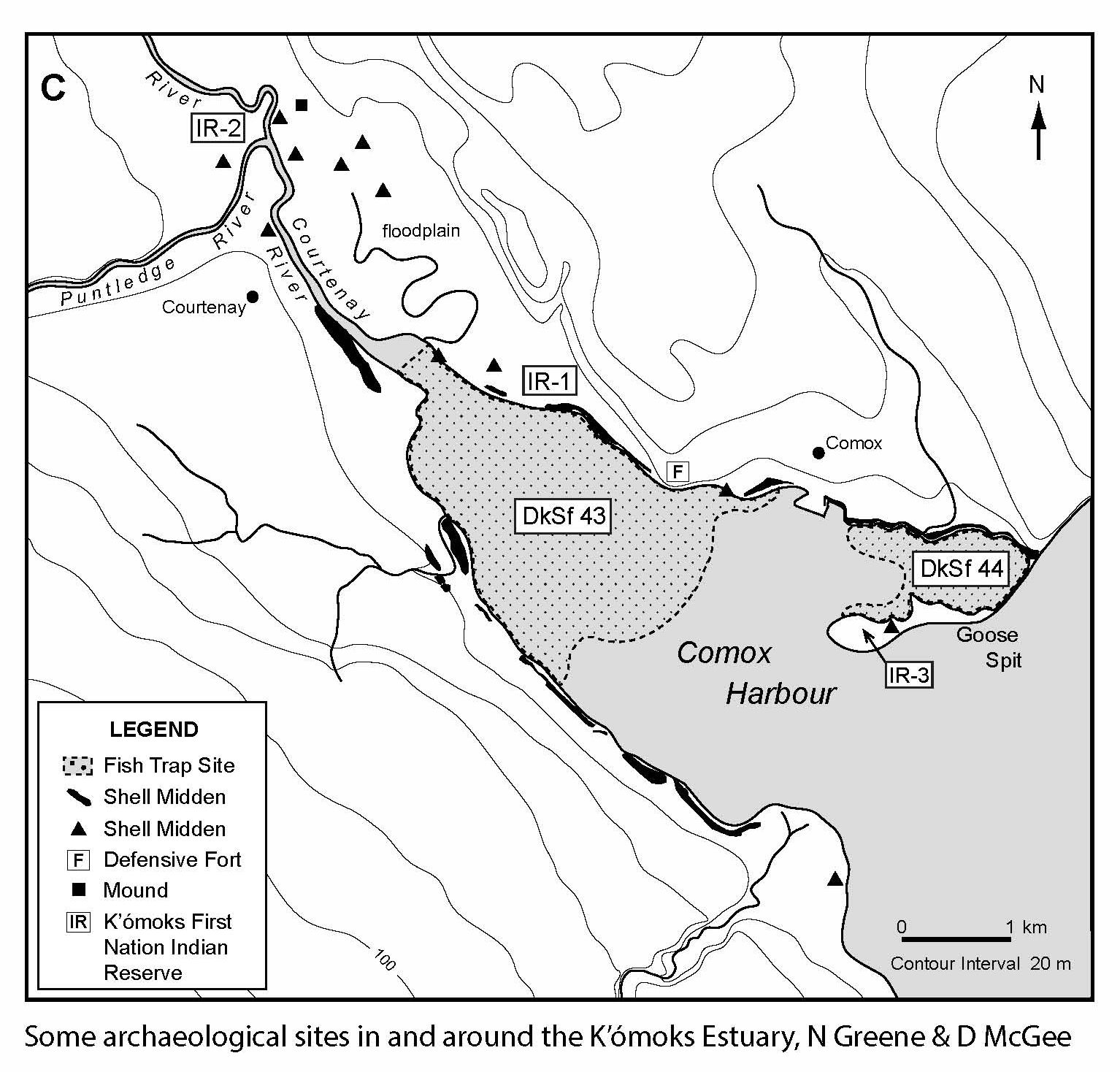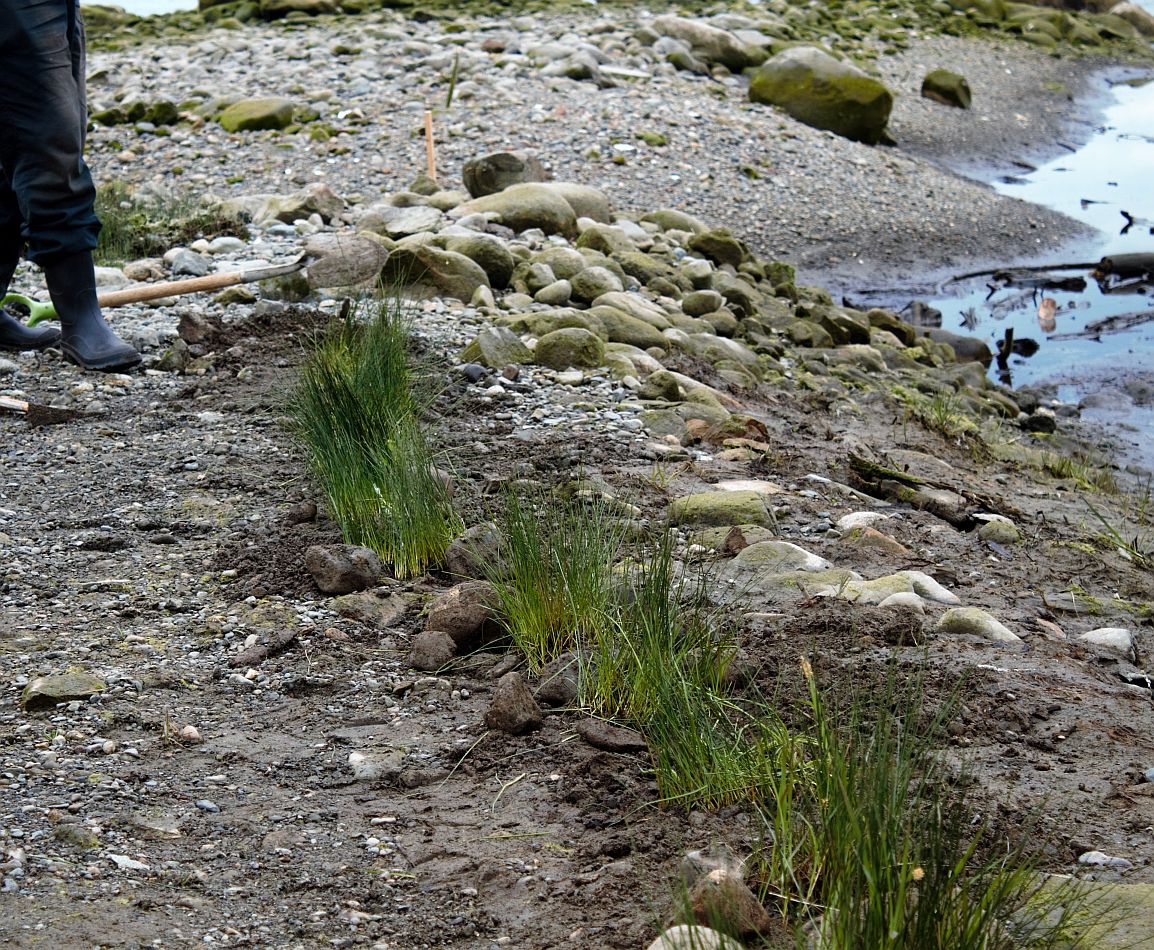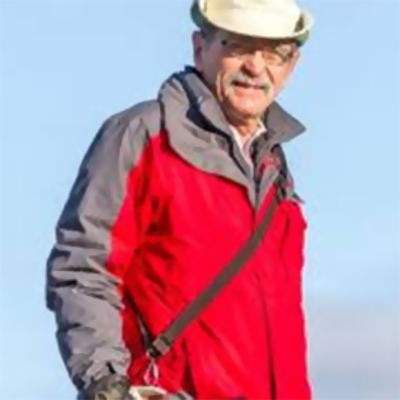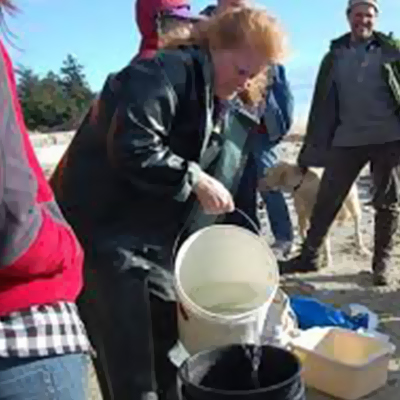K’ómoks First Nation
Local Archeology
The present-day location of the K’ómoks First Nation Village is the historical location of the Péntl’ech village of Kíxax. Péntl’ech, which means ‘buried belly’,was the name for the people and the area. The rich environment surrounding the village was capable of sustaining a large number of people. Evidence that natural food sources were abundant and available can be seen from the remnants of village sites, fish traps, shell middens, and processing sites scattered throughout the estuary; some of which are represented in the map of archaeological sites on this page.
Information from http://www.komoks.ca
Ancient Fish Traps
Human impact on shorelines
Both freshwater and marine shorelines provide work, recreation, living spaces and wonderful views. Their diverse habitats are often biologically rich and productive places.
Unfortunately, many human activities often harm these valuable natural features::
* Native trees, shrubs and grasses are cleared to make way for buildings, landscaping and views.
* Bulkheads, docks and piers displace beaches and erode sediments below the water line.
* Removal of shoreline vegetation allows contaminants to flow directly into the water.
* When prime wildlife habitats disappear, so do the birds, mammals, fish and beneficial insects and fish.
What is Green Shores?
Green Shores is an initiative of the Stewardship Centre for BC. It provides options and tools for a wide range of planning, design and construction professionals and landowners who are interested in minimizing the environmental impacts of their projects in a cost effective manner. Green Shores provides science-based tools and best practices to help people:
- minimize the impacts of new developments; and
- restore shoreline ecosystem function of previously developed sites.
Projects can also receive certification through a credits and rating system.
Why use Green Shores?
New strategies such as Green Shores help protect waterfront properties while also protecting and restoring habitats.
Benefits of Green Shores:
- Makes shorelines accessible, eliminating drop-offs and walls.
- Beautifies shorelines, adding native vegetation, wildlife habitat and access to waterfront shorelines and activities.
- Makes shorelines more secure against erosion and flooding, providing an alternative to costly sea walls.
- Provides a wide range benefits similar to the model of the popular LEED for Homes, BuiltGreen, and Sustainable Sites programs.
Green shores also protects against rising sea levels. And it can be used on a variety of shoreline types.
Media Team
Related Posts
Eelgrass Update
In the fall our restoration team surveyed the three eelgrass beds which were planted with the help of our volunteers back in June. The beds are looking healthy!
Kus-kus-sum: End of Season Wrap-up
Now that we have put the Kus-kus-sum site to bed for the winter, we wanted to give you all a little update on how things progressed this season – lots happened!
Kate McKeown
Meet our new Forage Fish Technician!
Greenshores at Dyke Road Park – Reimagining a Park
On September 20 and 21, over 20 people were on site to help with planting at the Comox Valley Regional District’s (CVRD) Dyke Road Park redevelopment project.
Gartley Beach Green Shores for Homes Project
Project Watershed is teaming up with the CVRD and the Stewardship Centre for BC to do some shoreline restoration at Gartley Beach in Royston.
Fall and Winter Forage Fish Sampling
We’re gearing up for the fall/winter season of forage fish sampling!

